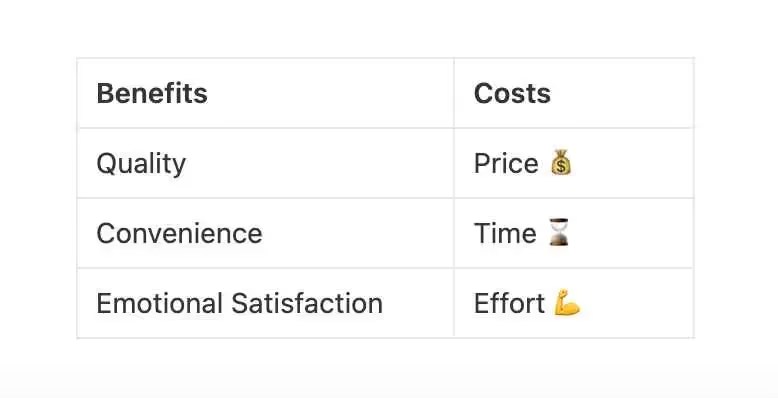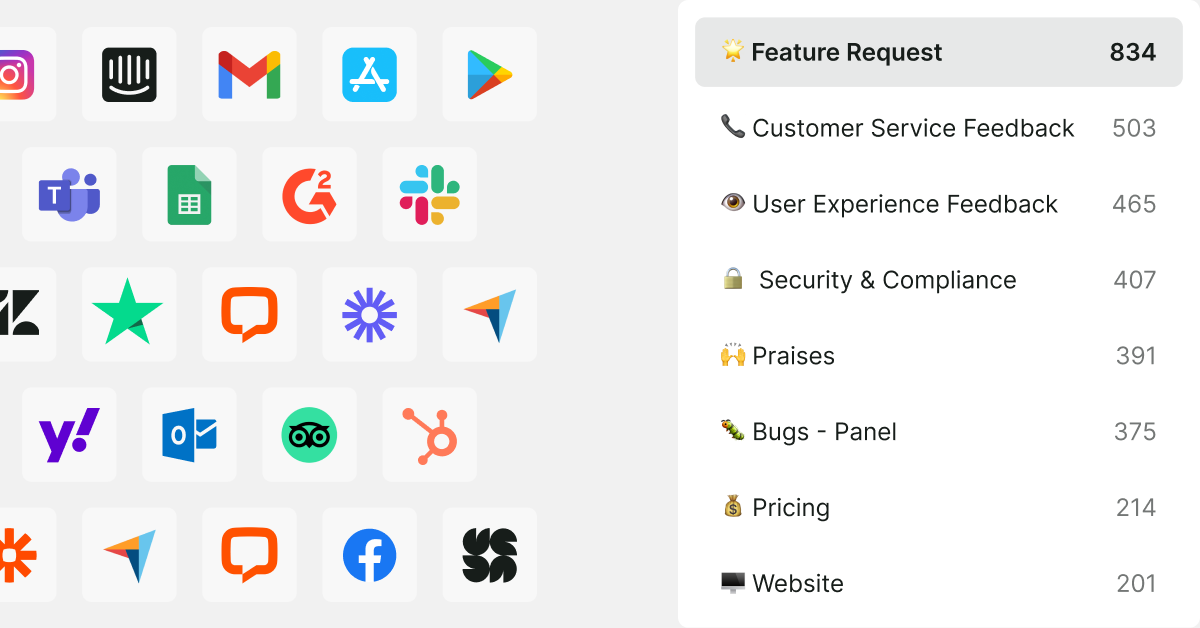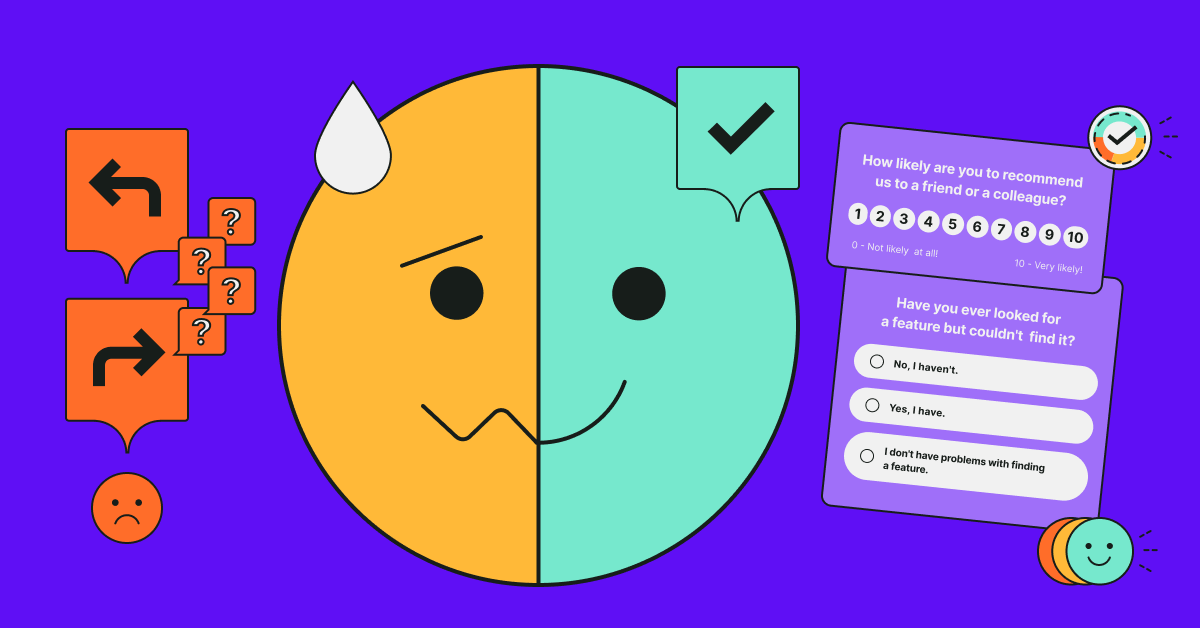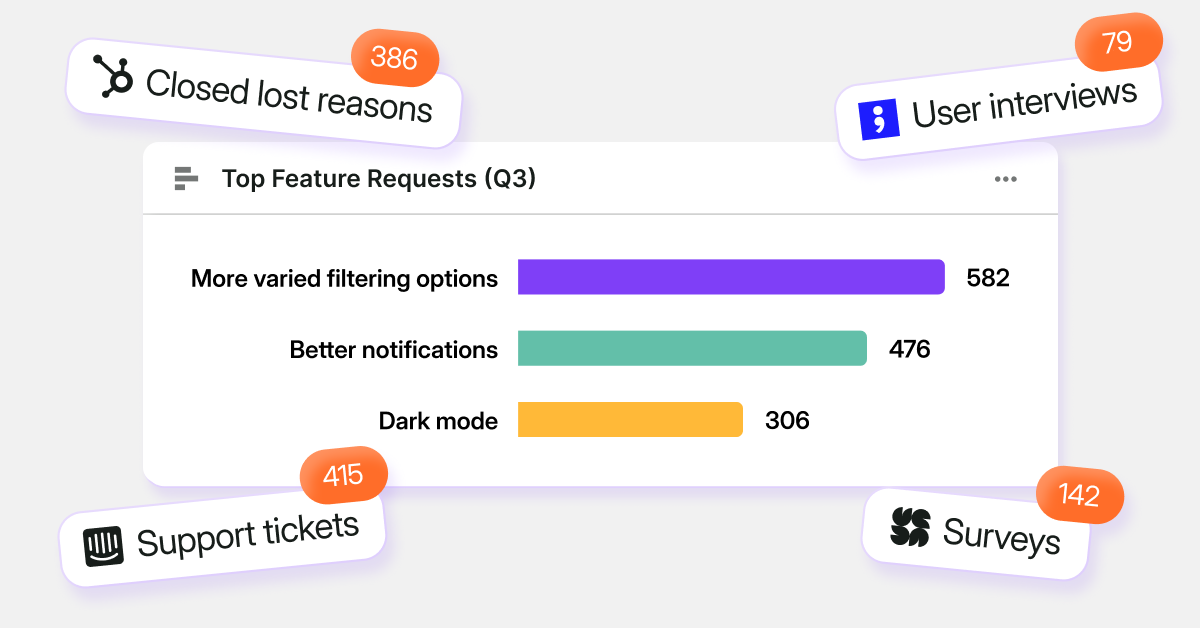Tl; dr;
- Customer Value Equation: Customer value is not just price-driven; it encompasses the benefits received versus the total costs, including emotional and time investments. It's subjective and varies per individual, guiding purchase decisions.
- Business Growth Lever: High perceived customer value leads to loyalty and advocacy, critical for a company's growth and resilience against market competition.
- Quantitative and Qualitative Metrics: Use a combination of metrics like CLV, NPS, and satisfaction scores to measure customer value from multiple angles, informing strategic decisions.
- Experience Personalization and CRM: Tailoring experiences and using CRM systems to understand and respond to customer preferences increases perceived value and fosters loyalty.
- Online Surveys as Insight Tools: Implementing online surveys can reveal customer perceptions and experiences, helping to refine offerings and reduce friction points to enhance perceived value.

Customer value might not be the first thing on your to-do list, but it should be—it's the driving force behind customer loyalty and repeat business.
This article is designed for business owners and marketers who aim to deepen their understanding of what truly resonates with their customers. We'll explore the concept of customer value, delve into why it's critical for your success, and provide actionable insights on enhancing it.
Get ready to unlock the full potential of your customer interactions and see your business flourish.
What is customer value?
Customer value encapsulates the perceived value of a product or service. It evaluates what your customers gain from an item against its cost.
This includes:
- Monetary cost: The price they pay.
- Time and energy: The effort required to acquire and use the product or service.
- Emotional cost: The stress or pleasure associated with the purchase.
Quantifying customer value can be formulated as:

This isn't just a financial calculation; it incorporates subjective measures too. Here's a simplified representation of how you might weigh benefits and costs:

The goal is for the benefits you perceive to be greater than the costs incurred.
When choosing between alternatives, customers naturally tend to opt for the product or service offering the highest customer value to them.
The equation you might consider here is:

Remember: customer value is inherently personal and differs from one individual to another.
What you value may vary greatly from what another customer values, underscoring the subjective nature of this concept.
Why is customer value important?
Customer value is crucial because it directly affects the success of a business. When customers perceive high value in products or services, they are more likely to make repeat purchases and recommend the brand to others. This customer loyalty boosts sales and builds a strong customer base, essential for long-term growth.
Moreover, understanding customer value will help you to improve your offering. By focusing on what is important to your customers, you can make smart changes to your products and services. This can lead to better customer satisfaction, often translating into positive reviews and word-of-mouth advertising.
Additionally, when customers feel they are getting good value, they are less sensitive to price changes. This can give you more flexibility in pricing strategies, which can be beneficial in a competitive market.
In essence, customer value is a key indicator of a company’s health. It reflects how well the business is meeting the needs and expectations of its customers and can be a strong predictor of future success.
How to measure customer value?
To effectively gauge your customers' worth of products or services, you must use experience metrics that can quantify value from different dimensions.
Customer Lifetime Value (CLV)
CLV is a projection of the total value your business is expected to derive from a customer over the entire business relationship. You compute CLV by multiplying the average purchase value by the number of transactions and average customer lifespan:
- Average Purchase Value (APV): Total revenue divided by the number of purchases over a given period.
- Purchase Frequency (PF): Total number of purchases divided by the number of unique customers who purchased over the same period.
- Customer Value (CV): APV multiplied by PF.
- Average Customer Lifespan (ACL): Average number of years a customer continues purchasing from your business.

Net Promoter Score (NPS)
NPS measures customer loyalty based on their likelihood to recommend your product or service.
After asking customers to rate their likelihood on a scale of 0 to 10, you classify them as:
- Promoters (score 9-10): Loyal customers will likely refer others.
- Passives (score 7-8): Satisfied but unenthusiastic customers vulnerable to competitive offerings.
- Detractors (score 0-6): Unhappy customers who can damage your brand through negative word-of-mouth.

Customer Satisfaction Metrics
Satisfaction metrics are indicators of how products or services meet or surpass customer expectations. Common metrics include:
- Customer Satisfaction Score (CSAT): Measured by asking customers to rate their satisfaction with your product or service.
- Time to Resolution (TTR): The average time it takes to resolve a customer's issues.
- First Response Time (FRT): The average time taken for a customer to receive the first response to their query.
These metrics are typically scored on a numerical scale or with a yes/no answer and are valuable for identifying areas for improvement.
Strategies to increase customer value
Increasing customer value through strategic approaches is essential to thrive in a competitive market. Tailoring your business tactics to address these specific areas can significantly improve perceived value, satisfaction, and customer retention.
⭐️ Differentiate your product
You can cultivate a more appealing product offering through product differentiation.
This involves identifying unique attributes of your products and emphasizing these features to set them apart from competitors. Features that might contribute to differentiation include superior quality, innovative design, or exceptional service associated with the product.
⭐️ Personalize and customize for a unique customer experience
Personalization and customization options make customers feel valued and cater to their unique needs. This could range from tailored recommendations to customizable products. Providing these options helps establish a personal connection and can elevate the customer's perception of value.
⭐️ Use customer relationship management systems
Customer Relationship Management (CRM) systems allow you to manage customer interactions meticulously.
By leveraging data on customer behavior, you can enhance satisfaction and loyalty through personalized communications and services. Consistent, positive engagement can translate to a higher perceived value of your offerings.
⭐️ Experiment with pricing
While doing your pricing research, you can try various pricing strategies that influence customer value perception.
Value-based pricing ensures that your prices are aligned with the customers' value perception of your products. Pricing models might include tiered pricing for different levels of product features or bundling products to create a perception of added value.

Challenges in delivering customer value
You'll encounter several hurdles as you strive to provide high value to your customers. And you need to recognize these challenges well to address them effectively.
Balancing cost and quality
To deliver customer value, you must strike a delicate balance between cost and quality.
Offering the highest quality may inflate your costs, possibly beyond what your customers are willing to pay. Conversely, minimizing costs too much can lead to subpar quality that fails to meet customer expectations.
- Cost control: You must identify cost-saving measures that do not compromise product or service quality.
- Quality assurance: Constant quality checks ensure consistent customer satisfaction, which can justify a higher price point if necessary.
Aligning with customer expectations
Understanding and aligning with what your customers expect from your product or service can be challenging. Every customer has a different set of expectations based on their individual needs and past experiences.
- Research: Regular market research can keep you informed about customer expectations.
- Feedback Loops: Implement mechanisms to gather and act on customer feedback promptly.

Adapting to market changes
The market environment is fluid, and customer values shift as new technologies and trends emerge. Staying relevant requires you to adapt to these changes quickly.
- Market Analysis: Keep a close watch on market trends and technological advancements.
- Agility: Develop a flexible strategy that allows you to adjust your offerings as market conditions or customer preferences change.
Customer value and brand loyalty
Customer value is intrinsic to fostering brand loyalty. By understanding and enhancing how much your product or service is worth to you, you lay the foundation for strong customer relationships and repeat business.
Building brand advocacy
To turn your customers into advocates, focus on exceeding their expectations. Engage with them through:
- Personalized experiences: Tailor your services or products to meet individual customer needs.
- Exceptional customer service: Provide support that makes customers feel valued and important.
Reputation management
Your brand's reputation significantly impacts customer value and loyalty. Ensure you:
- Monitor customer feedback: Regularly check reviews and respond to customer concerns.
- Maintain quality: Consistently deliver high-quality products or services to uphold your brand's image.
Loyalty programs
Loyalty programs can increase customer value and encourage repeat business by:
- Offering rewards: Give benefits for frequent purchases, such as discounts or exclusive offers.
- Tracking progress: Use a simple system to allow customers to see their rewards and benefits accrue over time.
Measure customer value with Survicate
Understanding and increasing customer value is not just beneficial—it's essential for any business aiming to thrive.
It's about striking the right chord with your customers by delivering more than just a product or service; it's about delivering an experience that resonates with their needs and desires.
The key to unlocking this potential lies in measuring and responding to customer feedback effectively. This is where Survicate steps in as a powerful ally. With Survicate, you can gain deep insights into customer perceptions, tailor your offerings, and make data-driven decisions that enhance customer satisfaction.
Ready to transform customer insights into actionable growth strategies? Start your journey with Survicate and take advantage of a 10-day trial offering all the features of the Business Plan. Experience firsthand how Survicate can help elevate your customer value today.
Customer value FAQs
In this section, you'll find direct answers to common inquiries about the concept of customer value and its critical role in marketing and business strategies.
What are the components of customer value?
Understanding customer value hinges on how your product or service fulfills various consumer needs. These needs manifest through specific components, each addressing a distinct area of value that holds significance for the customer.
Functional value
You experience functional value when a product or service meets your practical and utilitarian needs. Essentially, it's the job the offering does for you. For example, a smartphone provides functional value by enabling you to make calls, browse the internet, and use applications.
Monetary Value
Monetary value concerns the economic aspect of a purchase. You perceive this value when you consider a product or service's cost savings or affordability relative to its benefits.
Social Value
Social value reflects the extent to which owning a product or engaging with a service enhances your social standing. You gain social value when a product or service allows you to connect with others or improves your reputation. For instance, a luxury watch might confer a certain status upon you.
Psychological Value
You derive psychological value from your emotional responses and feelings toward a product or service. This might involve the pride you feel from owning an eco-friendly product or the confidence gained from wearing fashionable clothes.
Situational Value
The contextual usefulness of a product or service determines situational value. It is highly situational and specific to your circumstances. For example, an emergency phone charger holds significant value when traveling and your battery is low.
How is customer value defined in a marketing context?
Customer value in marketing refers to the perceived worth of a product or service to you compared to the alternatives. It encapsulates how well the product or service meets your needs and expectations relative to the price paid.
Can you provide examples of customer value in business?
Examples include a mobile phone with exceptional battery life, offering more usage between charges or a car insurance policy with complimentary roadside assistance, enhancing your peace of mind while driving.
What are the key types of customer value identified in marketing?
Marketing professionals identify four main types of customer value: functional value, monetary value, social value, and psychological value. Each type corresponds to different aspects of customer experiences and benefits.
Why is customer value important for a company's success?
Customer value is vital for a company's success because it drives customer satisfaction, loyalty, and word-of-mouth referrals. Companies need to ensure that the value provided exceeds the cost from your perspective to maintain competitiveness.
How do customer value and customer satisfaction relate to each other?
Customer value and satisfaction are closely intertwined, with value often driving satisfaction. If a product or service meets or exceeds your expectations regarding benefits relative to costs, satisfaction will likely follow.
What is the difference between customer value and customer benefit?
Customer value is the overall worth perceived by you involving both benefits and costs.
A customer benefit is specific positive outcomes or attributes you expect from a product or service without considering cost.














.svg)

.svg)



